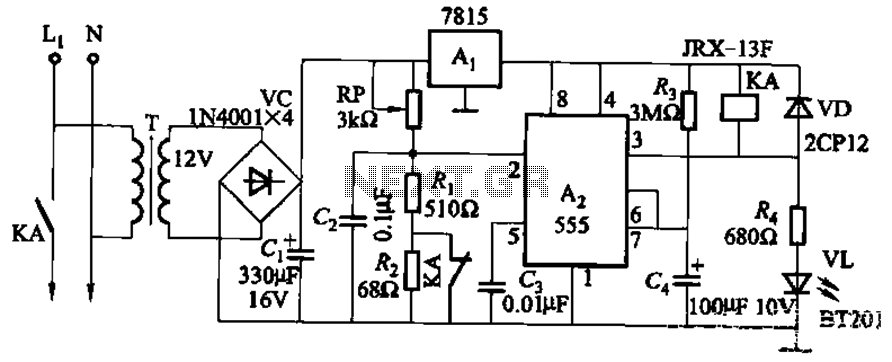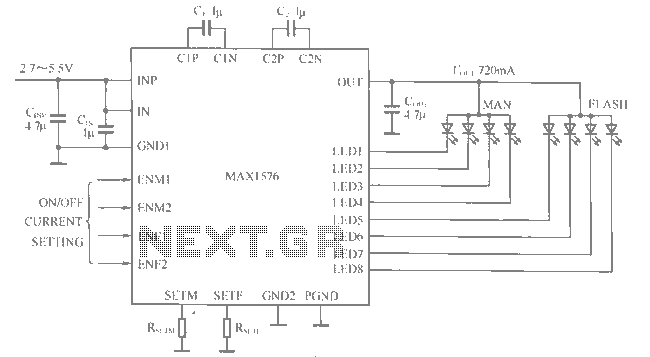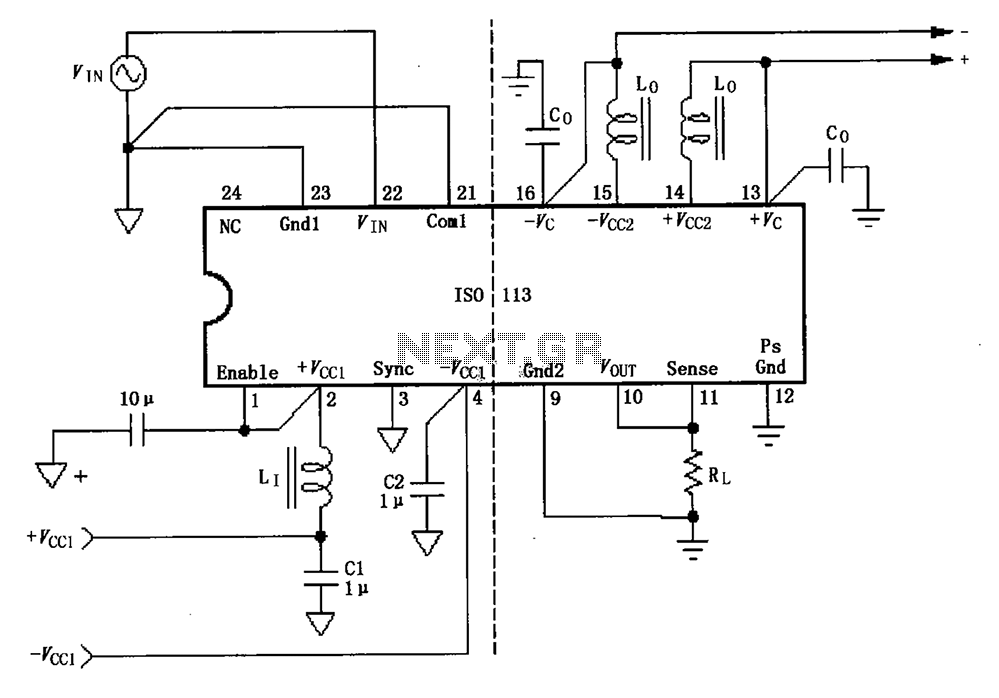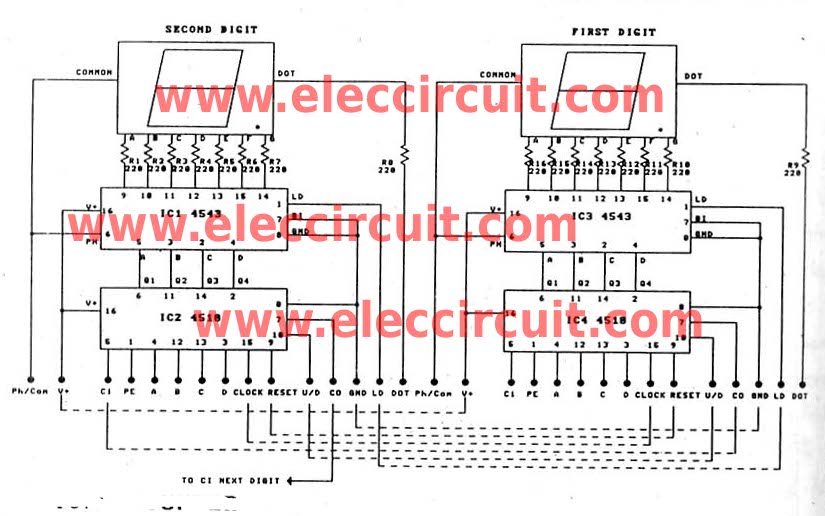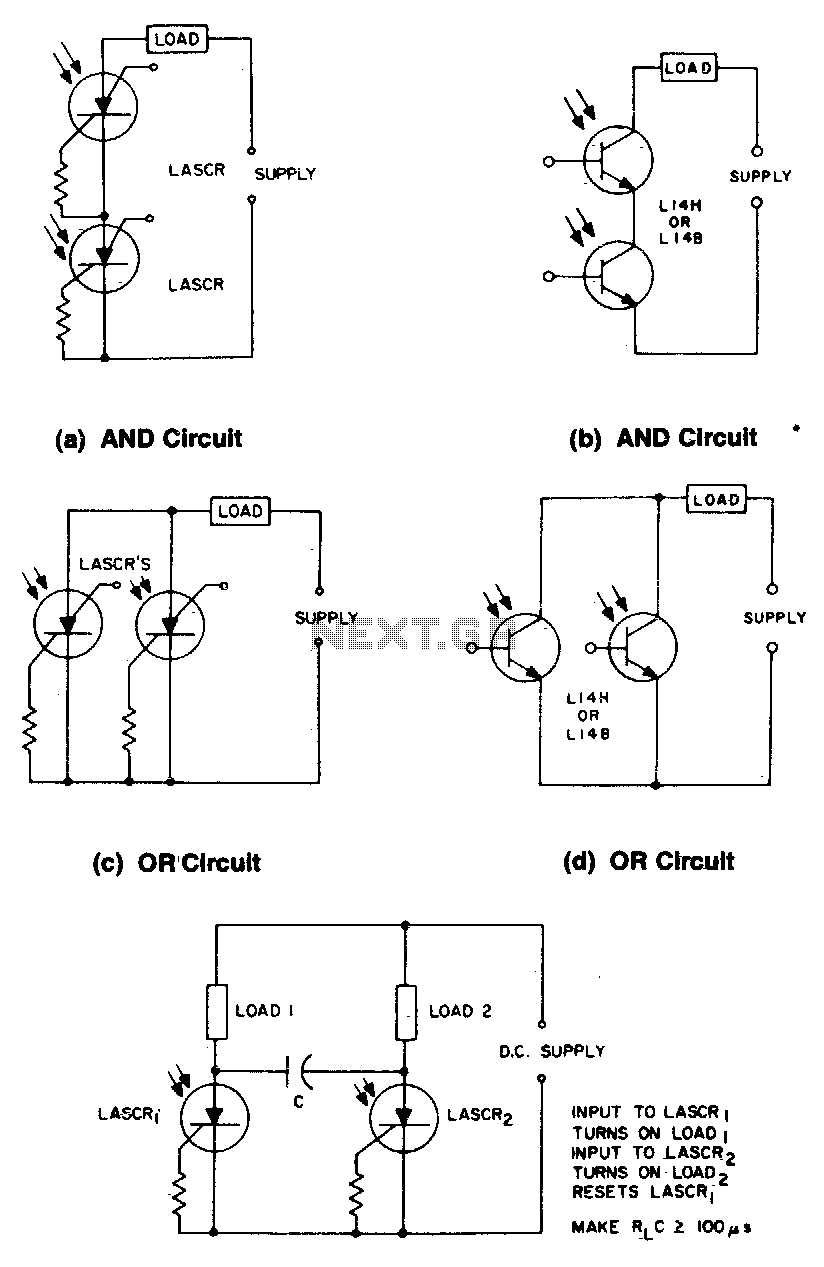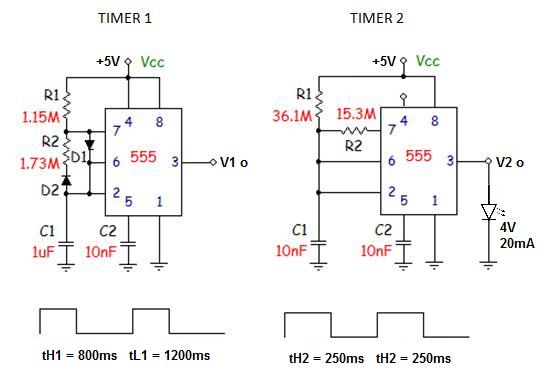
3 Channel Color Organ Circuit
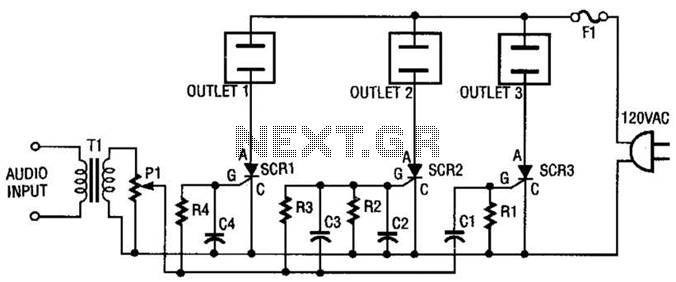
The AC line power is introduced into the circuit through F1, a protective 5-A fuse. One side of the AC line is connected to one side of each AC outlet, while the other side is connected to each silicon-controlled rectifier (SCR). Each SCR is subsequently linked to the other side of each AC outlet. An audio signal is introduced into the circuit from a stereo speaker via transformer T1. This transformer has a primary impedance of 500 ohms and a secondary impedance of 8 ohms. T1 is connected such that the 8-ohm side is linked to the speaker and the 500-ohm side is connected to potentiometer P1. Potentiometer P1 functions as a level or sensitivity control. The signal from its wiper lead is directed to each RC filter stage. Since each SCR has a distinct RC (resistor/capacitor) filter on its gate lead, each SCR will respond to different frequencies. The higher the capacitance in the filter, the lower the frequency to which the SCR will respond.
The circuit operates by first ensuring that the AC line power is safely managed through the 5-A fuse (F1), which protects against overcurrent conditions. The AC outlets are configured in parallel, allowing for multiple devices to draw power from the same source. The SCRs play a crucial role in controlling the power delivered to the outlets; they act as electronic switches that can be turned on or off based on the gate signal they receive from the RC filter stages.
The audio signal from the stereo speaker is transformed by T1, which steps down the voltage to a manageable level suitable for processing. The primary winding of T1, with its higher impedance, ensures that the signal is compatible with the circuit's input requirements. The connection of the 8-ohm side to the speaker allows for efficient signal transfer, while the 500-ohm side's connection to potentiometer P1 provides an adjustable sensitivity control. This potentiometer allows the user to modify the amplitude of the audio signal before it reaches the SCRs, enabling fine-tuning of the system's response to the audio input.
The RC filter stages connected to the gate leads of the SCRs are critical for frequency selection. Each SCR's gate is driven by a unique RC filter that determines its frequency response characteristics. As the capacitance value in the filter increases, the SCR will trigger at lower frequencies, allowing for selective activation based on the audio signal's frequency content. This design enables the circuit to respond dynamically to varying audio signals, making it suitable for applications such as audio level control, light dimming, or motor speed regulation based on audio input. The careful selection of resistor and capacitor values in each filter stage is essential for achieving the desired frequency response and ensuring optimal performance of the SCRs within the circuit. The ac line power is brought back into the circuit through Fl, a protective 5-A fuse. One side of the ac line is connected to one side of each ac outlet. The other side of the ac line is connected to each SGR or silicon-controlled rectifier. Each SCR is, in turn, connected to the other side of each ac outlet.An audio signal is brought into the circuit from a stereo speaker by transformer Tl. This transformer has 500- Impedance on the primary and 8- impedance on its secondary. Connect Tl so that the 8- side is connected to the speaker and the 500- side is connected to potentiometer PI.Potentiometer PI is used as a level or sensitivity control.
The signal from its wiper lead is applied to each RC filter stage. Because each SCR has a different RC (resistor/capacitor) filter on its gate lead, each will respond to different frequencies. The greater the capacitance in the filter, the lower the frequency that the SCR will respond to. 🔗 External reference
The circuit operates by first ensuring that the AC line power is safely managed through the 5-A fuse (F1), which protects against overcurrent conditions. The AC outlets are configured in parallel, allowing for multiple devices to draw power from the same source. The SCRs play a crucial role in controlling the power delivered to the outlets; they act as electronic switches that can be turned on or off based on the gate signal they receive from the RC filter stages.
The audio signal from the stereo speaker is transformed by T1, which steps down the voltage to a manageable level suitable for processing. The primary winding of T1, with its higher impedance, ensures that the signal is compatible with the circuit's input requirements. The connection of the 8-ohm side to the speaker allows for efficient signal transfer, while the 500-ohm side's connection to potentiometer P1 provides an adjustable sensitivity control. This potentiometer allows the user to modify the amplitude of the audio signal before it reaches the SCRs, enabling fine-tuning of the system's response to the audio input.
The RC filter stages connected to the gate leads of the SCRs are critical for frequency selection. Each SCR's gate is driven by a unique RC filter that determines its frequency response characteristics. As the capacitance value in the filter increases, the SCR will trigger at lower frequencies, allowing for selective activation based on the audio signal's frequency content. This design enables the circuit to respond dynamically to varying audio signals, making it suitable for applications such as audio level control, light dimming, or motor speed regulation based on audio input. The careful selection of resistor and capacitor values in each filter stage is essential for achieving the desired frequency response and ensuring optimal performance of the SCRs within the circuit. The ac line power is brought back into the circuit through Fl, a protective 5-A fuse. One side of the ac line is connected to one side of each ac outlet. The other side of the ac line is connected to each SGR or silicon-controlled rectifier. Each SCR is, in turn, connected to the other side of each ac outlet.An audio signal is brought into the circuit from a stereo speaker by transformer Tl. This transformer has 500- Impedance on the primary and 8- impedance on its secondary. Connect Tl so that the 8- side is connected to the speaker and the 500- side is connected to potentiometer PI.Potentiometer PI is used as a level or sensitivity control.
The signal from its wiper lead is applied to each RC filter stage. Because each SCR has a different RC (resistor/capacitor) filter on its gate lead, each will respond to different frequencies. The greater the capacitance in the filter, the lower the frequency that the SCR will respond to. 🔗 External reference
